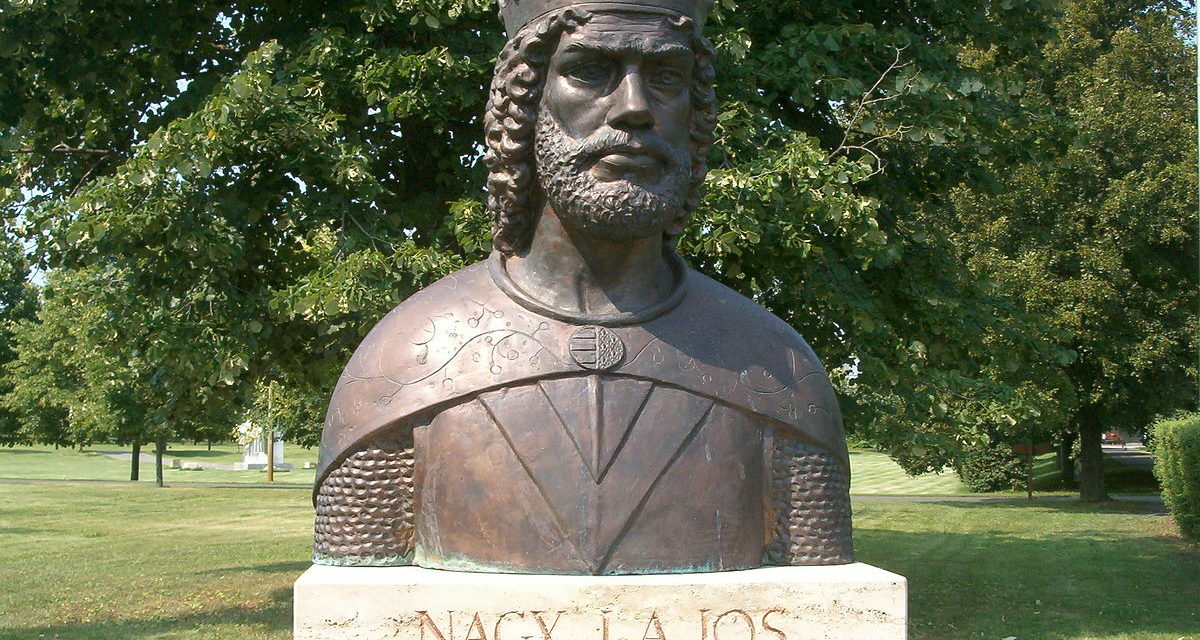"A nation that does not know its past does not understand its present, and cannot create its future!"
Europe needs Hungary... which has never let itself be defeated.
Education and culture in the age of Louis the Great
The renewal of the cult of St. László, the church architecture of the time, fresco painting, and the art of the knightly age have already been discussed in the previous chapter. The chivalric culture in Hungary was connected to the intellectual trends that developed in Western Europe. The relationships maintained by the House of Anjou with Italy, France, Poland and other European states played a decisive role in this.
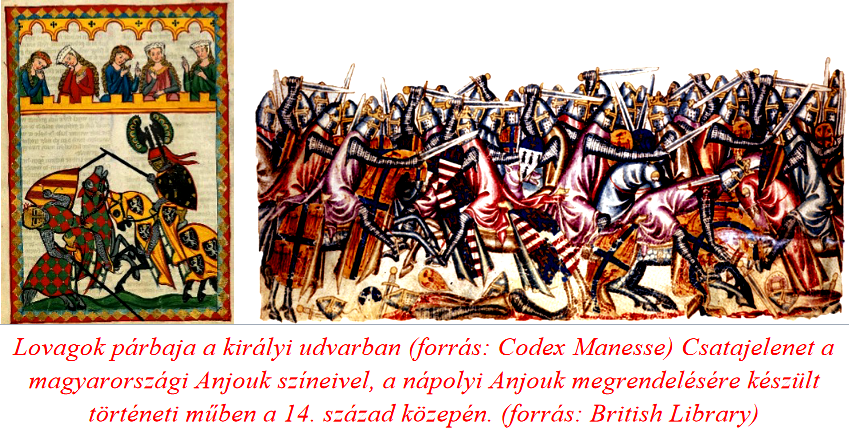
Architecture
In the 14th century, Gothic style spread in Hungary as well, one of the earliest and most significant creations of which is Diósgyőr Castle.
A castle was built on the rock in the valley of the Szinva stream already at the time of the conquest, which was destroyed around 1241. Anonymus already mentions the fortress in his work. Construction began in 1343 in the fortress inherited from Róbert Károly. According to the plans, the residential tower was built with four inner towers, which included the largest equestrian hall in Central Europe with an area of 380 square meters. In addition to Visegrád, Buda and Zólyom, Lajos Nagy also made the castle of Diósgyőr a royal center. This became especially important when the Poles also elected him as their king. the Bükk Mountains lay halfway between Buda and Krakow. Diósgyőr was the king's favorite residence. The big court hunts were organized here, as at that time, in addition to the herd of deer and wild boar, bears and bison enriched the abundance of the bükki. After the death of Lajos Nagy, Diósgyőr became the property of the queens, as they said at the time, it became the "signature dress of the queens".
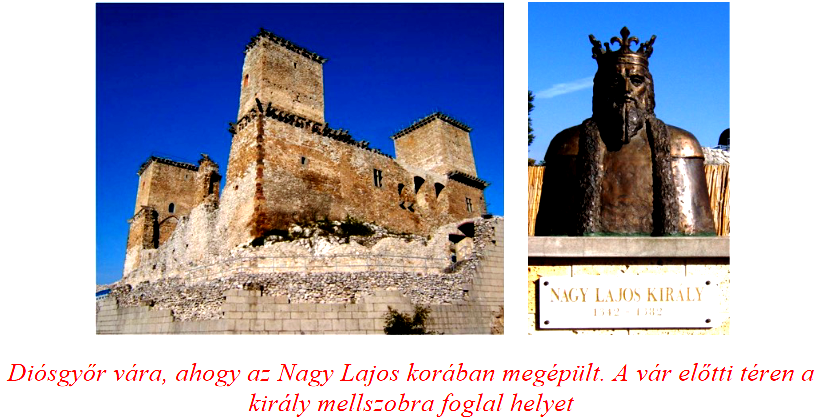
Another notable building of the period is the Church of Our Lady of Budavári, which was remodeled in 1370 in the Gothic style. However, Buda was enriched not only by its churches, but also by the stone houses and ornate portals of noble nobles and citizens.
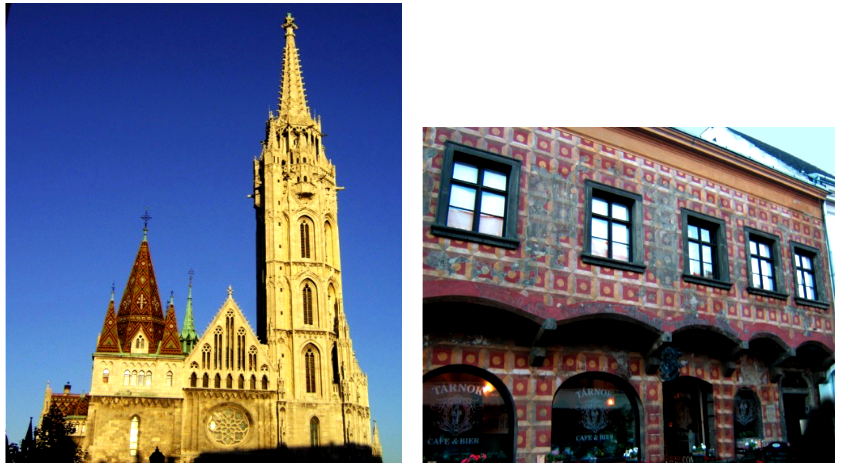

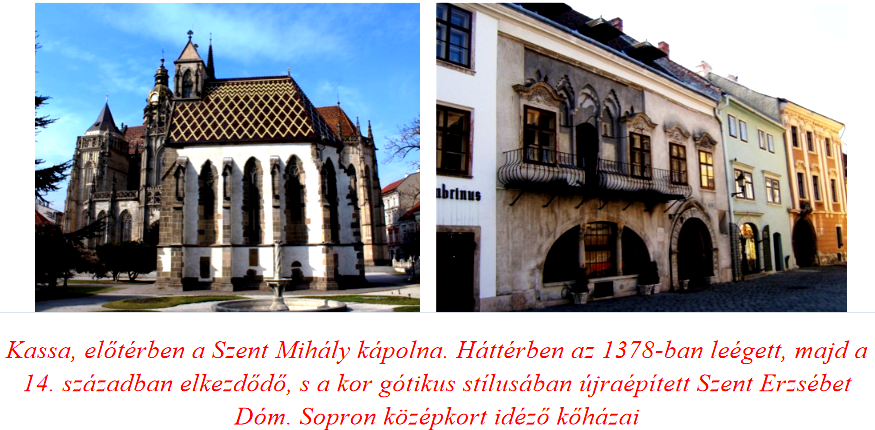
In addition to Buda, Cluj-Napoca, Kassa, Lőcse, Sopron, Fehérvár, Pécs, Várad, as well as many cities in Transylvania, the Highlands, and Transdanubia can still boast of buildings that proclaim the beauty of the Gothic era of Louis the Great.
Fine art
The Calvary is the work of Tamás Kolozsvári, the altarpiece originally displayed in the church of Garamszentbenedek (today in Slovakia), which can be viewed in the Christian Museum in Esztergom.
(Tamás Cluj, a master who lived at the turn of the 14th and 15th centuries, should not be confused with the brothers from Cluj, who also created the statue of St. George.) It is true that the altarpiece was created in the first years of the 15th century, but the outstanding painter of the age is the Gothic trend that developed in the time of Louis the Great was a representative. He came from Transylvania, but he was not of Saxon origin, which is indicated by the name he used himself, Thomas de Colossvar. art historians infer from his style related to Western painting
Another famous master of painting is János Aquila, who left his handprints on the walls of many Western Transdanubian churches. His best-known and best-preserved fresco can be seen in the "temple of light" in Velemér.
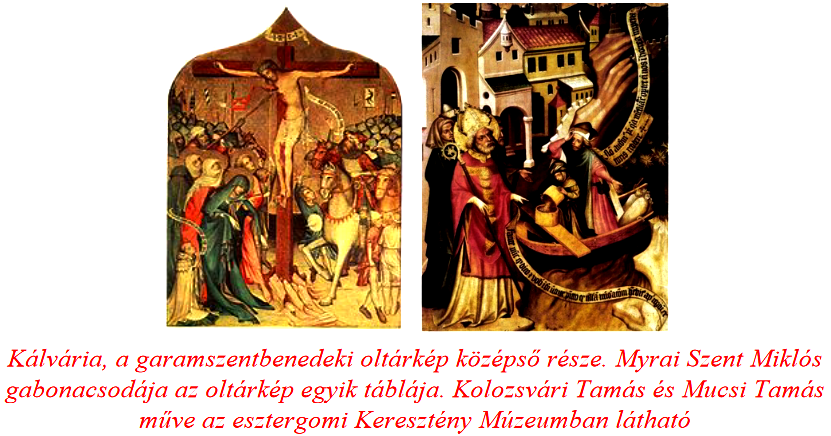
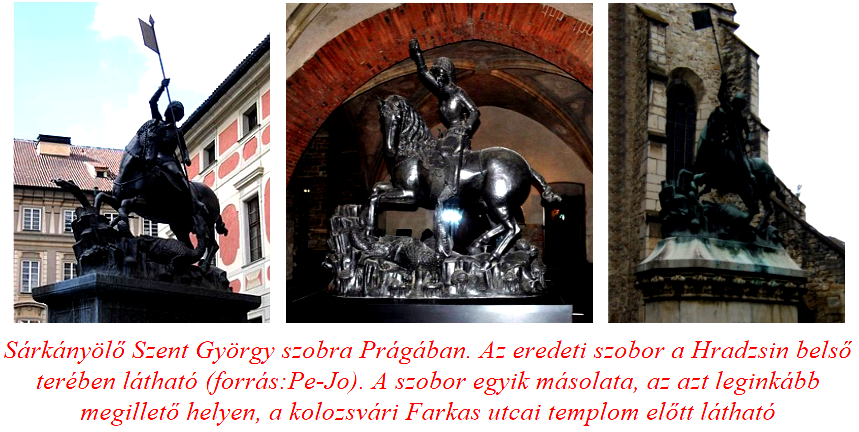
It proved that the world-famous work of the sculptor Cluj brothers (Márton and György), Saint George the Slayer, was completed in 1373.
The bronze work now preserved in Hradzin, Prague, was the first full-length statue in Europe that could be cast using the wax casting process. Copies of the statue can be seen in Cluj, Buda, Pest in the Epreskert, Szeged, the Hungarian National Museum and the Budapest University of Technology. Between 1360 and 1365, the Cluj brothers created the full-length statues of St. István, St. Imre and St. László on the order of the bishop of Várad. However, these were destroyed in 1660, when the Turks took Várad. (The statue of St. George is said to have been saved by Suleiman the Great himself in 1541, when the Turks occupied Buda. The sultan, realizing the value of the work of art, covered it up so that the followers of Islam could not see it. According to some information, the statue of St. George came to Prague during the Turkish era .)
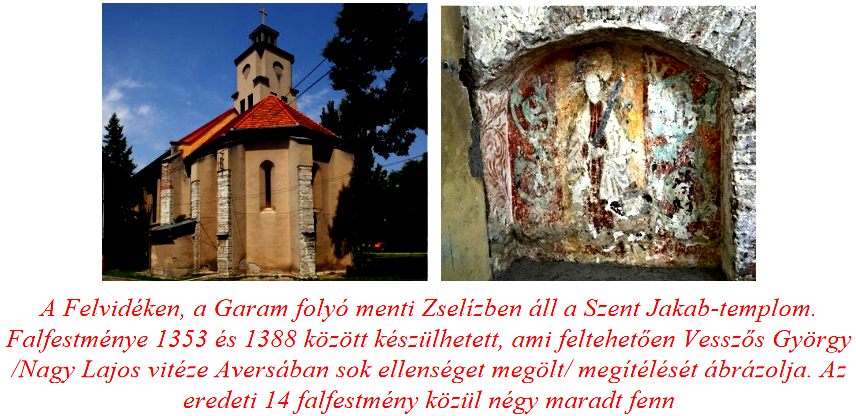
The founding of the University of Pécs
The four-decade reign of Lajos Nagy is inexhaustible in terms of historical and cultural development, as well as the creations of the Christian Church that enhance Hungarian values. In these centuries, few could read and write, it was more the privilege of priests and court pen-wielders. Property donations and new laws caused more and more lawsuits, as a result of which more and more people thought that learning and learning to spell was a useful thing. Among other things, this contributed to the fact that the first university in Hungary was founded in Pécs in 1367. According to the custom of the Middle Ages, each large landowner set aside money to educate a son with better skills or a son's relative. The initiator of the foundation of the university was Bishop Vilmos of Pécs, who opened the first university in the medieval Kingdom of Hungary with the support of King Louis and the permission of the Pope.

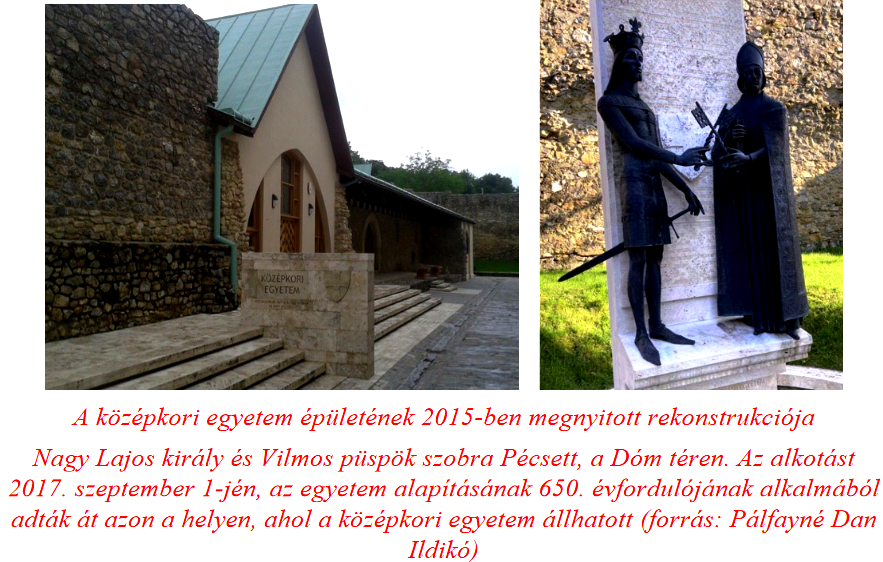
The founding of the University of Pécs was legalized by the founding document of Pope Orbán V.: "At the request of the King of Hungary, we order that there be a studium generale in the city of Pécs, in which ecclesiastical and civil laws and all other non-forbidden sciences, except religious studies, should be taught..." In the states of Central Europe, The 14th century was a great era of university foundations, as education began in Prague in 1346, in Krakow in 1364, in Vienna in 1365 and in Pécs - with three faculties - in 1367. Most of the initiatives, including the one in Pécs, ended after a short time. We do not know much about the functioning of the institution, its teachers and students. However, its influence is indisputable, since Hungarian universities were opened in Buda and Bratislava in the following decades.
Chronicles and chroniclers
The most well-known is the Képes chronicle, which, according to our knowledge today, began to be written in 1358 by canon Márk Kálti from Székesfehérvár. Many researchers deny the authorship of Márk Kálti, but the identity of the miniature painter Miklós Meggyesi, who created the beautiful pictures, is not in doubt. The priceless chronicle with its many miniatures in the previous chapters discusses Hungarian history from the Hun-Hungarian era to the time of Róbert Károly.
Chronicle writers, builders, painters, and sculptors of the time of Louis the Great could base themselves on rich Hungarian traditions. After all, the previously mentioned Legendarium of Anjou, or the Nekcsei Bible, without mentioning the constructions and goldsmith's art, suggests that both the Árpád and Anjou times were in sync with European arts.
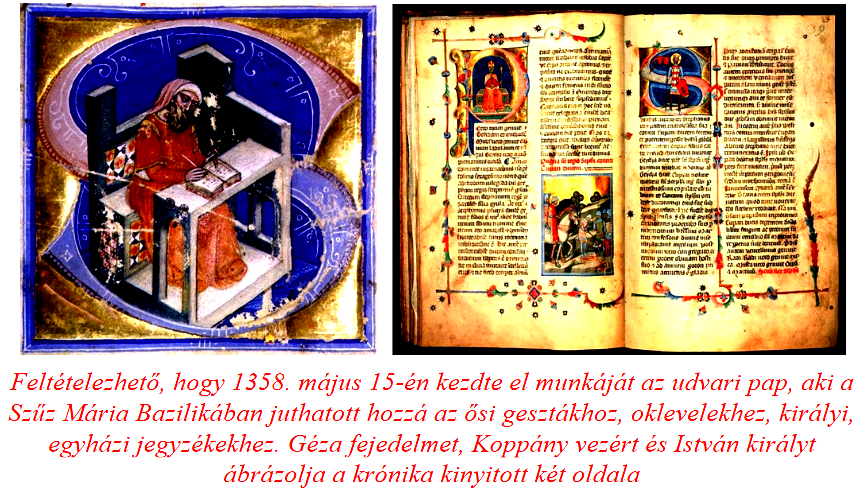
Among other things, Lajos' era was characterized by the creation of colorful, pictorial, representative history books. The chronicle of Canon János Küküllei and the Nameless Minorite, also known as the continuation of the Képes chronicle. His work entitled The Things of King Lajos Küküllei, probably completed in 1389 and written in 55 chapters, is the first secular biography in the history of Hungarian literature. And the Nameless Minorita discusses the king's campaigns, victories, injuries and bear hunting in 19 chapters. The translation of the legend about St. Francis of Assisi, which survived in the 15th century Jókai codex, was presumably made in 1370. It should be noted that most of the chroniclers of the time were Franciscan monks, which is confirmed by the content and style of the texts. It was characteristic of the kings of Hungary even before the time of Louis the Great, but it was most beautifully preserved in the chronicles of the 14th century, when we can read that: "The people of Hungary were preserved in the beauty of peace and abundant tranquility." The ideal of chivalry contributed to this in the 14th century. But it is no coincidence that the person of St. László stands out in this age, as we have analyzed in detail before.
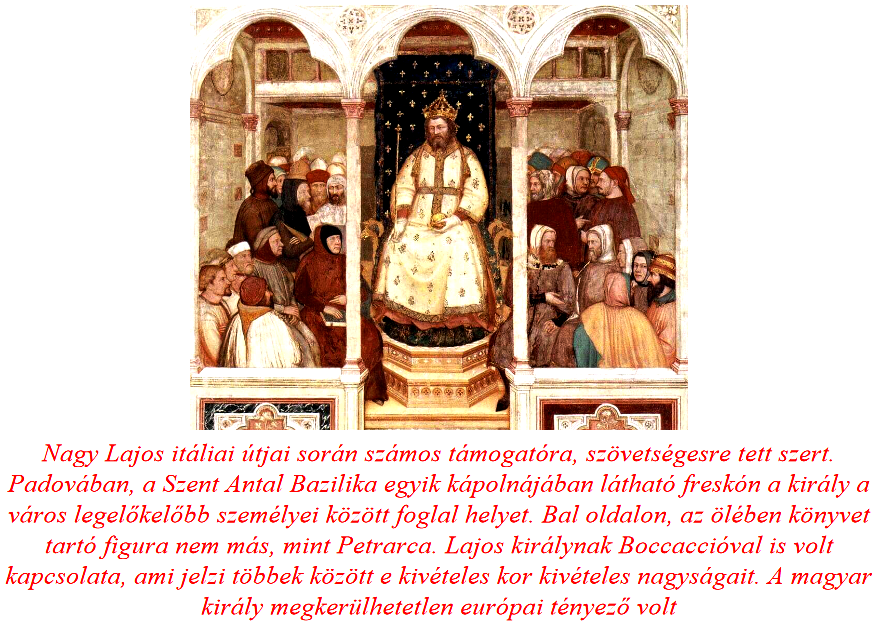
The spread of the Pauline order in Europe
The only male monastic order founded in Hungary is the Pauline order named after Saint Pál the Hermit, founded by Canon Boldog Özséb of Esztergom in 1250. The order still works today. Its center is in Jasna Góra Monastery in Czestochowa, Poland. Its Hungarian headquarters is located in Pécs.
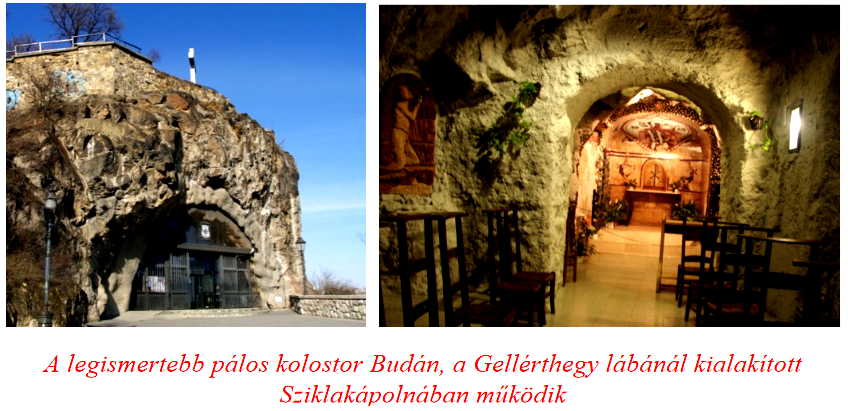
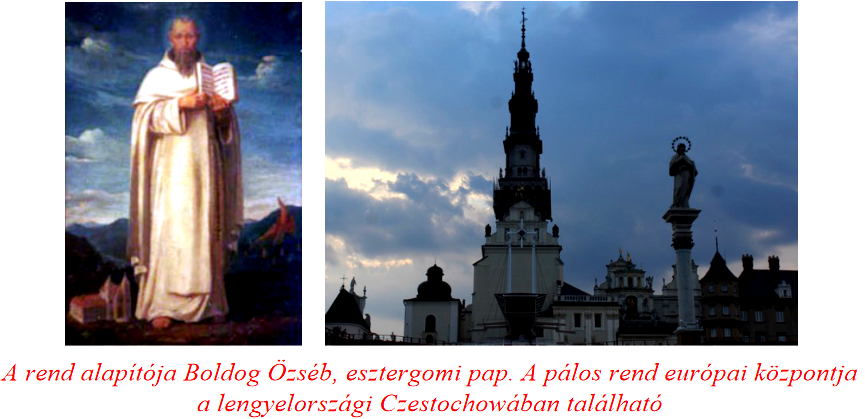
During the reign of Louis the Great, the Hungarian Paulists could already look back on a hundred years of history. However, the order was strengthened in the second half of the 14th century, when King Louis founded several monasteries in honor of the white friends. The Háromhegy monastery in Martonyi was built by the local nobles between 1341-1347. In 1352, the king founded a monastery and a church in Márianosztra in honor of the Magyars' Lady.
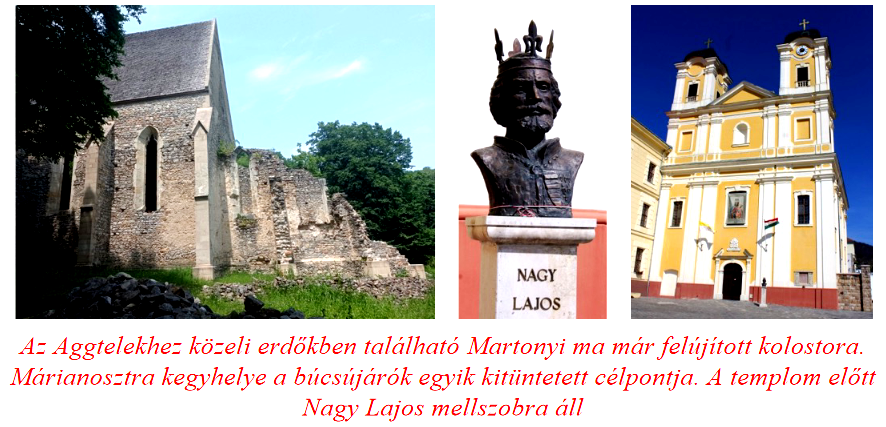
In addition to founding monasteries, King Louis raised the activity of Hungarian monks to European status by acquiring the relics of St. Paul the Hermit of Thebes from Venice in 1381 with the cooperation of the Pope. He placed the relics in the Budaszentlőrinc monastery and offered Hungary to his holy protection.
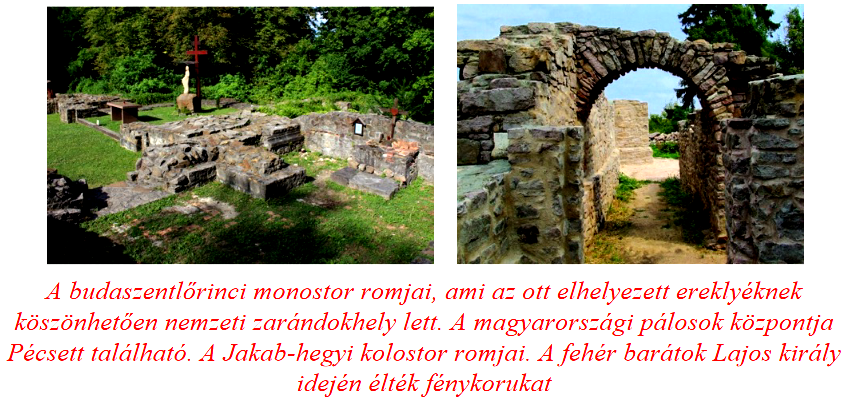
The legacy and death of Lajos Nagy
King Louis intended his older daughter, Mária, and his future son-in-law, Sigismund, to the Polish throne. However, the Poles insisted that the monarch settle in Krakow, which the royal couple could not do. Therefore, after long negotiations and the signing of treaties, Mary's sister Hedwig (known as Jadwiga in Polish) was placed on the Polish throne. Hedvig of Anjou, later canonized, became the wife of the Grand Duke of Lithuania and a convert of Lithuanians to Christianity. This ended the Hungarian-Polish personal union. (As a reminder! In addition to the superhuman activity of Hedvig and the control of the Kingdom of Poland, the Lithuanians converted to Christianity by asking for the help of Saint László. This is also the legacy of Louis the Great.)

In the last years of his life, Lajos lived in seclusion in the Pauline monasteries he founded due to his illness. Instead, his wife Erzsébet and the barons (Miklós Garai and Balázs Forgách) ruled. However, after the death of Lajos, the power struggle between the lords flared up. (In 1386, the queen and her supporters were assassinated, and order was overthrown in the country.)
King Louis had only reached his fifty-sixth year when he died on September 10, 1382 in the town of Nagyszombat. Although his death can be said to be natural, he was consumed by the physical and mental activity he pursued throughout his life. Contemporary European chroniclers, poets, writers, ecclesiastical and secular persons almost remembered the great king of the Hungarians with hymns of praise. Let's highlight a few lines from the sea of accolades: "Many a rich ruler he vastly surpassed." "Louis was the most powerful prince in the world among the Christians, and the most dreaded king by the infidels who had been, or could be, since the death of the Emperor Charlemagne." "There is no other king in the world who has done so much for the honor of his empire and the benefit of his subjects, yet he was not puffed up or ambitious." "I have never seen a prince who combines so much power with so much modesty."
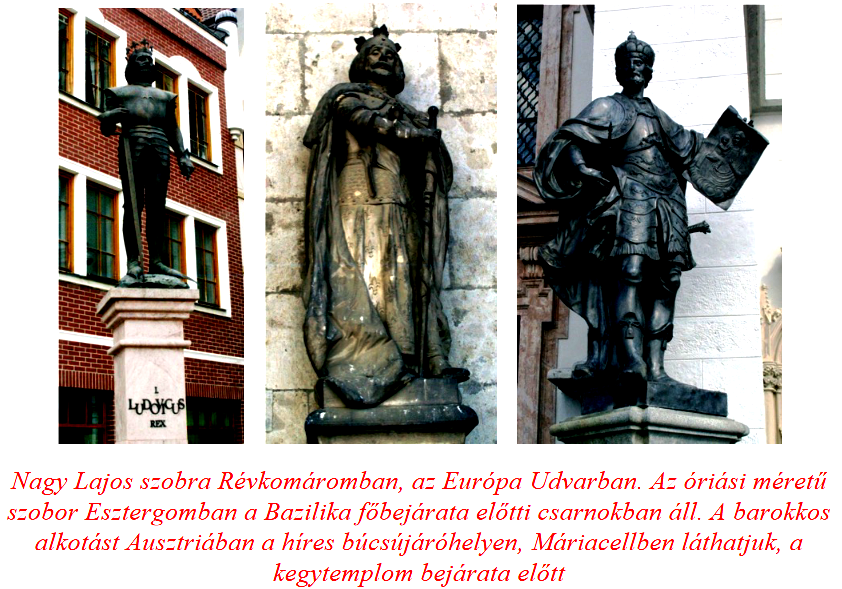
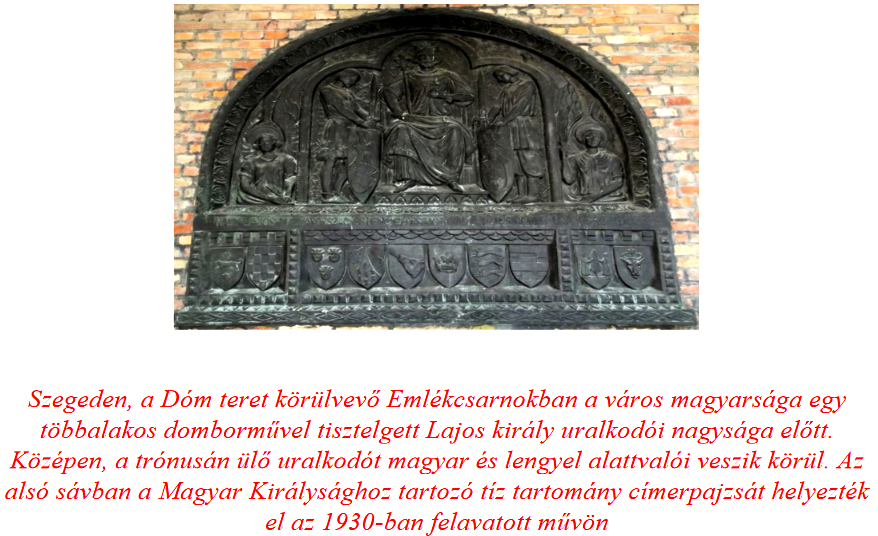
János Küküllei wrote immediately after the monarch's death: "He left this world on the 10th of September at God's call, and shortly before that a wonderful comet appeared. After his death, there was such a great mourning in the country, as if everyone was mourning their own death."
Ottó Freisingi had previously even questioned the sanctity of Saint Stephen and described the Hungarians as barbarians and savages, like so many Western chroniclers. However, by the end of the Árpád era and the time of the Anjous, Hungarians, considered barbarians, were at the forefront of European dynasties, European diplomacy and court life, as well as the arts. A significant change in the image of Hungary can be seen especially when the people who were once declared anti-Christian became a bastion of Christianity for centuries. As it is today!
Author: Ferenc Bánhegyi
(Header image: Wikipedia)
The parts of the series published so far can be read here: 1., 2., 3., 4., 5., 6., 7., 8., 9., 10., 11., 12., 13., 14., 15., 16., 17., 18., 19., 20., 21., 22., 23., 24,, 25., 26., 27., 28., 29/1.

